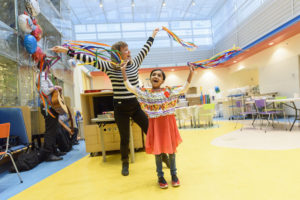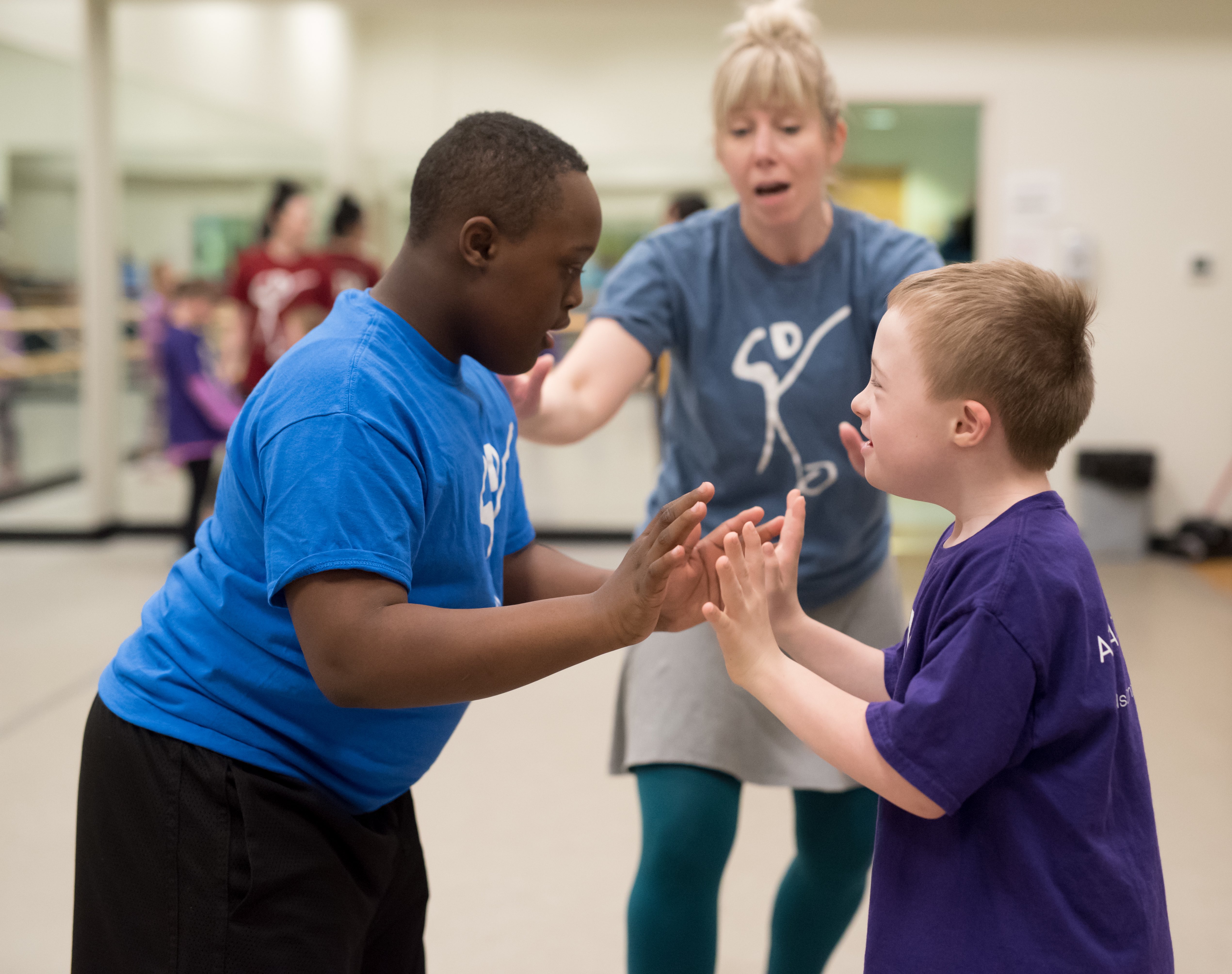

General Questions
What is dance/movement therapy?
The American Dance Therapy Association (ADTA) defines dance/movement therapy as the psychotherapeutic use of movement to promote emotional, social, cognitive and physical integration of the individual.
Dance/movement therapy is:
- Focused on movement behavior as it emerges in the therapeutic relationship. Expressive, communicative, and adaptive behaviors are all considered for group and individual treatment. Body movement, as the core component of dance, simultaneously provides the means of assessment and the mode of intervention for dance/movement therapy.
- Practiced in mental health, rehabilitation, medical, educational and forensic settings, and in nursing homes, day care centers, disease prevention, health promotion programs and in private practice.
- Effective for individuals with developmental, medical, social, physical and psychological impairments.
- Used with people of all ages, races and ethnic backgrounds in individual, couples, family and group therapy formats.
What do dance/movement therapists do?
Dance/movement therapists focus on helping their clients improve self-esteem and body image, develop effective communication skills and relationships, expand their movement vocabulary, gain insight into patterns of behavior, as well as create new options for coping with problems. Movement is the primary medium dance/movement therapists’ use for observation, assessment, research, therapeutic interaction and interventions. Dance/movement therapists help develop treatment plans and goals, document their work in clinical records and collaborate with professionals from other disciplines.
Where do dance/movement therapists work?
Dance/movement therapists work in a variety of settings including nursing homes, schools, psychiatric, rehabilitation and medical facilities, drug treatment centers, counseling and crisis centers, and wellness and alternative health care centers.
What does a dance/movement therapy session look like?
The extensive range of dance/movement therapy techniques and the needs and abilities of participants allow for a wide variety of movement activities in dance/movement therapy sessions. Dance/movement characteristics, from subtle and ordinary movement behaviors to expressive, improvisational dancing could occur.
To learn more about the ways in which dance/movement therapists work, go to the ADTA YouTube page and Profiles of DMTs.
Becoming a Dance/Movement Therapist FAQs
How can I become a dance/movement therapist?
There are two routes one can pursue to become a dance/movement therapist. View the R-DMT Applicant Handbook for an in-depth guide of requirements.
#1: ADTA Approved Graduate Program
Graduates of approved programs meet all professional requirements for the Registered Dance/Movement Therapist (R-DMT) credential. Please contact the school directly for application process, requirements, etc.
#2: Alternate Route
The Alternate Route is defined as a Master’s degree with dance/movement therapy training from qualified teachers. Other requirements include movement observation and assessment, psychology coursework, fieldwork, internship, and dance experience.
What degree/credential do dance/movement therapists receive?
The dance/movement therapy credential is awarded at the graduate level. Therefore, a Master’s degree is required. Upon completion of an ADTA Approved Graduate Program or the Alternate Route and acceptance by the Dance/Movement Therapy Certification Board, the Registered Dance/Movement Therapist (R-DMT) credential is awarded. R-DMT represents attainment of a basic level of competence, signifying both the first level of entry into the profession and the individual’s preparedness for employment as a dance/movement therapist within a clinical and/or educational setting. The Board Certified Dance/Movement Therapist (BC-DMT) credential can be obtained after the R-DMT is awarded, with additional requirements and experience. BC-DMT is the advanced level of dance/movement therapy practice, signifying both the second level of competence for the profession and the individual’s preparedness to provide training and supervision in dance/movement therapy, as well as engage in private practice.
What undergraduate degree should I pursue?
At the undergraduate level, there is no specific degree required. However, it is a good idea to have substantial exposure to topics related to both dance and psychology. For specific prerequisites, contact each ADTA Approved Graduate Program.
Where can I find information on how to volunteer/shadow a dance/movement therapist?
Opportunities to volunteer/shadow a dance/movement therapist are limited due to the nature of the work and the need for confidentiality. If you are interested in volunteering/shadowing, contact your region’s Member-at-Large or a local chapter.
What kinds of experience would be helpful for a future dance/movement therapist?
It is strongly encouraged to pursue a broad practice in dance, including a variety of dance styles and techniques, choreography, performance, and teaching. For education, focus on psychology courses and a course in kinesiology and anatomy. Helpful experience would include working or volunteering with people in various human service settings (i.e. summer camps, schools, hospitals, nursing homes).
How long does it take to become a dance/movement therapist?
If attending an ADTA Approved Graduate Program, expect to be in school for two to three years, full-time. For the Alternate Route, the length of time depends on many factors, such as committing full or part-time, location of courses (some travel may be required), when courses are offered, when the individual can attend, etc.
What school would you recommend?
Attending any of the ADTA Approved Graduate Programs provides in-depth knowledge and training from exceptional, experienced, board certified dance/movement therapists. The ADTA suggests contacting and/or visiting the school(s) to help decide if the institution is a good fit.
What does approval of graduate programs mean?
The ADTA approves programs that meet the requirements stated in the ADTA Standards of Education and Clinical Training. Graduates of approved programs meet all educational requirements for the Registered Dance/Movement Therapist (R-DMT) credential.
Where can I find a list of Alternate Route offerings in my area?
Ongoing Alternate Route course offerings can be found in the Alternate Route Course Calendar and in the Alternate Route Graduate Coursework documents contained on the Alternate Route page. Also, check the Announcements section under the Forum, ADTA on Facebook, and ADTA LinkedIn.
Where can I find information on licensure requirements?
Licensure requirements vary state by state. Contact your state licensing board directly. Find your state’s board on the State Professional Counselor Licensure Board List.
|